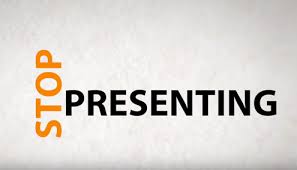
This week’s article has been contributed by Darleen Santore, aka “Coach Dar”.
We all have to learn to feel good about ourselves and get rid of the negative talk. We have to live life before it’s too late and that means pushing through the negative to get to the positive. We have to learn that we are good enough.
We need to stop doubting ourselves and stop the negative talk. We don’t need to compare or compete with others.
Just because it’s hard now doesn’t mean it will be hard forever. You need to press forward, and if you need help, call for help…reach out. You have great things ahead. Believe it! A bad day doesn’t mean a bad life or a bad year, there’s always light that peeks through the darkness.
You may be nodding your head while you’re reading this and thinking, “Coach Dar is right. I need to stop beating myself up, but how do I do that?” I’m glad you’re thinking this way because that means you’re getting yourself in gear to make a change. You have to begin with a Reset, then Refocus and finally Reframe so that you can Restart. What do each of these mean and how do you go about doing these things?
- Reset – Pause and stop doubting yourself. If you’re feeling down, and you’re doubting yourself, make today the reset. Don’t beat yourself up with lies. Don’t let fear of failure get to you. If there’s an area that you need to work on, you have got to reset so you can start fresh.
- Refocus – Examine how you’re looking at things. Look at how your time is being spent. Evaluate what is important. If you have a particular sales goal that seems impossible, but you’re not putting the right amount of effort into it, how can you reach your goal? Refocus on what you want to do and see it in a different light. See it as possible.
- Reframe – Believe in yourself. Your past doesn’t define you. You are amazing. You have to reframe how you are seeing things. Stop with the guilt. We feel guilty about everything. Stop with the negative self-talk. Stop with the fear of failure. We all fail, but that’s how we learn!
Reset. Refocus. Reframe so that you can Restart.
Put positive affirmations around you. Stop feeling inadequate. Find a community of people that pull you up and encourage you. Enough with not feeling like you’re enough or that you can’t reach your goal.
Commit to “flip the script” of your life today and make yourself the best version of yourself that you can be. So that you can be the best in life, business and relationships. Let’s do this!
For more information about Coach Dar, her individual and group coaching or to book her as a speaker, please visit www.CoachDar.com or email Coach Dar.

 In three separate conversations, I was contacted by 2 sales representatives and one entrepreneur who asked to provide a critique of a presentation that they were taking to a prospect. While the circumstances around each were different, there was one common challenge I identified following each conversation-information around a solution, product, or service was being presented way too soon! None of the three understood how the prospect ran their business without the recommendation that they would prescribe. And only one realized how this approach would lower their chances of a successful outcome, even if they did (for some strange reason) win the business.
In three separate conversations, I was contacted by 2 sales representatives and one entrepreneur who asked to provide a critique of a presentation that they were taking to a prospect. While the circumstances around each were different, there was one common challenge I identified following each conversation-information around a solution, product, or service was being presented way too soon! None of the three understood how the prospect ran their business without the recommendation that they would prescribe. And only one realized how this approach would lower their chances of a successful outcome, even if they did (for some strange reason) win the business.
 Why You Should Use Those Buyer Personas You’ve Been Avoiding
Why You Should Use Those Buyer Personas You’ve Been Avoiding




